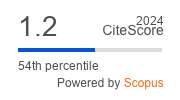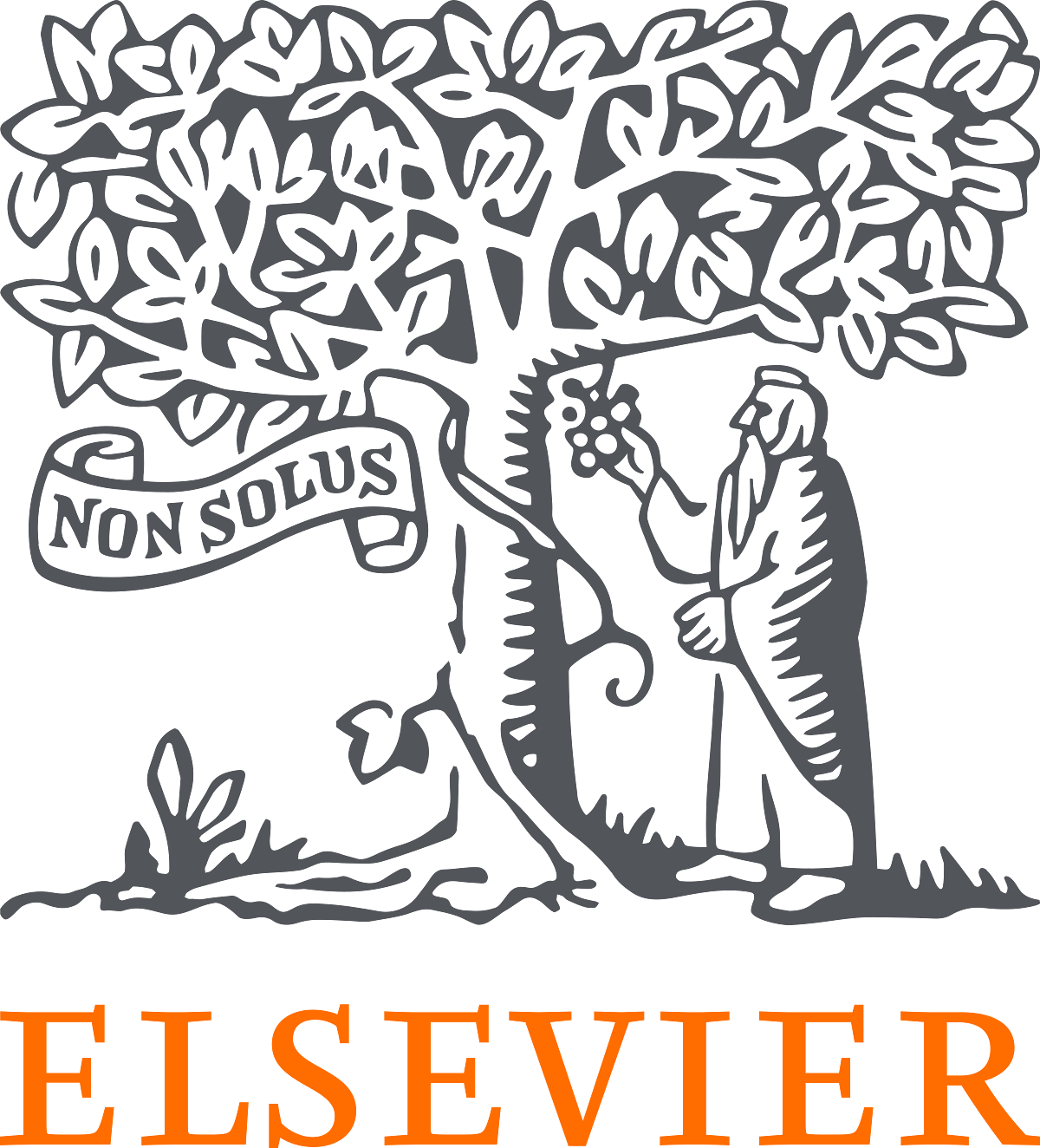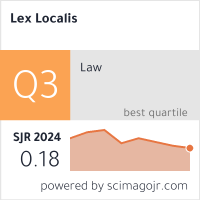Vpliv vrste postopka javnega naročanja na trajanje javnega naročanja
DOI:
https://doi.org/10.4335/16.2.361-378(2018)Ključne besede:
javno naročanje, trajanje postopka javnega naročanja, učinkovitost javnega naročanja, postopki javnega naročanja, SrbijaPovzetek
V študiji proučujemo, kako pomemben je vpliv vrste postopka in števila prejetih ponudb na trajanje procesa javnega naročanja. Učinkovitost in hitrost procesa javnega naročanja skrajšujeta čas obnove inventarja, neposredne in posredne stroške naročanja in pospešujeta in izboljšujeta obvladljivost temeljnih procesov v organizacijah, ki so zavezane k izvajanju procesa javnega naročanja. V študiji se osredotočamo na kvantitativno analizo vpliva postopkovnega okvira javnega naročanja, ki ga večinoma določa centralna raven upravljanja, in opisujemo druge potencialne dejavnike učinkovitosti, na katere se lahko vpliva na lokalni ravni. Nabor podatkov smo prejeli od urada za javna naročila v Srbiji. Vsebuje 42.850 primerov javnih naročil po popravku manjkajočih in »umazanih« podatkov. S statističnimi metodami smo predstavili dva linearna modela, kjer vrsta postopka in število prejetih ponudb predstavljata približno 23 % spremenljivosti v odvisni spremenljivki. V prispevku so podana priporočila za izboljšave učinkovitosti javnega naročanja ter za podatke, ki jim je treba slediti, da se lahko razvije bolj izčrpen, natančen in zanesljiv napovedni model trajanja procesa javnega naročanja.
Literatura
Akai, N., Horiuchi, Y. & Sakata, M. (2005) Short-run and Long-run Effects of Corruption on Economic Growth: Evidence from State-Level Cross-Section Data for the United States (No. CIRJE-F-348) (Tokyo: CIRJE, Faculty of Economics, University of Tokyo).
Barney, J. B. (1986) Organizational culture: can it be a source of sustained competitive advantage?, Academy of management review, 11(3), pp. 656-665.
Barsemoi, H., Mwangagi, P. & Asienyo, B. O. (2014) Factors influencing procurement performance in private sector in Kenya, International Journal of Innovation and Applied Studies, 9(2), pp. 632-641.
Basak, M. (2016) Achieving E-procurement Benefits in an Aviation MRO Environment, Operations and Supply Chain Management 9(1), pp. 50-60.
Bertot, J. C., Jaeger, P. T. & Grimes, J. M. (2010) Using ICTs to create a culture of transparency: E-government and social media as openness and anti-corruption tools for societies, Government Information Quarterly, 27(3), pp. 264-271, https://doi.org/10.1016/j.giq.2010.03.001.
Büschgens, T., Bausch, A. & Balkin, D. B. (2013) Organizational culture and innovation: A meta‐analytic review, Journal of Product Innovation Management, 30(4), pp. 763-781, https://doi.org/10.1111/jpim.12021.
Chu, P. Y., Hsiao, N., Lee, F. W. & Chen, C. W. (2004) Exploring success factors for Taiwan's government electronic tendering system: behavioral perspectives from end users, Government Information Quarterly, 21(2), pp. 219-234, https://doi.org/10.1016/j.giq.2004.01.005.
Cudanov, M., & Jasko, O. (2012) Adoption of information and communication technologies and dominant management orientation in organisations, Behaviour & Information Technology, 31(5), pp. 509-523, https://doi.org/10.1080/0144929X.2010.499520.
Cudanov, M., Jasko, O. & Săvoiu, G. (2012) Public and public utility enterprises restructuring: Statistical and quantitative aid for ensuring human resource sustainability, The Amfiteatru Economic Journal, 14(32), pp. 307-322.
Denison, D. R., & Mishra, A. K. (1995) Toward a theory of organizational culture and effectiveness. Organization science, 6(2), pp. 204-223, https://doi.org/10.1287/orsc.6.2.204.
Dimant, E. & Schulte, T. (2016) The Nature of Corruption: An Interdisciplinary Perspective, German Law Journal, 17(1), pp. 53-72.
Dobre, O. I. (2013), Employee motivation and organizational performance, Review of Applied Socio-Economic Research, 5(1), pp. 53-60.
Erridge, A., & McIlroy, J. (2002) Public procurement and supply management strategies, Public Policy and Administration, 17(1), pp. 52-71, https://doi.org/10.1177/095207670201700105.
EU Commision (2011) Commission staff working paper evaluation report impact and effectiveness of EU public procurement legislation, Brussels, 27.6.2011, SEC(2011), 853.
Feisel, E., Hartmann, E. & Giunipero, L. (2011) The importance of the human aspect in the supply function: Strategies for developing PSM proficiency, Journal of Purchasing and Supply Management, 17(1), pp. 54-67, https://doi.org/10.1016/j.pursup.2010.07.001.
Fernandes, T. & Vieira, V. (2015) Public e-procurement impacts in small-and medium-enterprises, International Journal of Procurement Management, 8(5), pp. 587-607, https://doi.org/10.1504/IJPM.2015.070904.
Galbraith, J. R. (1971) Matrix organization designs How to combine functional and project forms, Business Horizons, 14(1), pp. 29-40, https://doi.org/10.1016/0007-6813(71)90037-1
Garrone, P., Grilli, L. & Rousseau, X. (2010) Management Discretion and Political Interference in Municipal Enterprises. Evidence from Italian Utilities, Local Government Studies, 39(4), pp. 514-540.
Gliner, J. A., Morgan, G. A., & Leech, N. L. (2017) Research methods in applied settings: An integrated approach to design and analysis (3rd edition) (New York: Routledge).
Hall, D. (1998) Public Enterprise in Europe.United Kingdom (London: University of Greenwich Institute for Public Policy Research (IPPR)).
Handy, C. (1993) Balancing corporate power: A new federalist paper, The McKinsey Quarterly, 3, p. 159.
Hauk, E., & Saez-Marti, M. (2002) On the cultural transmission of corruption, Journal of Economic Theory, 107(2), pp. 311-335, https://doi.org/10.1006/jeth.2001.2956.
Hernández, M. A. & Stolfo, S. J. (1998) Real-world data is dirty: Data cleansing and the merge/purge problem, Data mining and knowledge discovery, 2(1), pp. 9-37.
Hessami, Z. (2014) Political corruption, public procurement, and budget composition: Theory and evidence from OECD countries, European Journal of political economy, 34, pp. 372-389, https://doi.org/10.1016/j.ejpoleco.2014.02.005.
Iossa, E., & Rey, P. (2014) Building reputation for contract renewal: implications for performance dynamics and contract duration, Journal of the European Economic Association, 12(3), pp. 549-574, https://doi.org/10.1111/jeea.12075.
Jasko, O., Jovanovic, P. & Cudanov, M. (2015) Cost Efficiency of Public Procurement at Local Level: Chances for Improvement of Local Self-government and Public Enterprises in Serbia, Lex localis-Journal of Local Self-Government, 13(3), pp. 789-807, https://doi.org/10.4335/13.3.789-807(2015).
Kahneman, D. & Tversky, A. (1979) Prospect Theory: An Analysis of Decision under Risk, Econometrica, 47(2), pp. 263-291.
Kim, W., Choi, B. J., Hong, E. K., Kim, S. K. & Lee, D. (2003) A taxonomy of dirty data, Data mining and knowledge discovery, 7(1), pp. 81-99.
Knezevic, S., Jovanovic, P. & Mitrovic, A. (2016) Fiscal Decentralization – City of Belgrade Case Study, Management, 21(79), pp. 55-68, https://doi.org/10.7595/management.fon.2016.0015.
Mahmood, S. A. I. (2010) Public procurement and corruption in Bangladesh confronting the challenges and opportunities, Journal of public administration and policy research, 2(6), pp. 103-111.
Marczyk, G., DeMatteo, D., & Festinger, D. (2005) Essentials of research design and methodology (New Jersey, USA: John Wiley & Sons.
McGuinness, K. & Bauld, S. (2006) Value for money, Summit, 9(1), pp. 1-20.
Mijatovic, I., Cudanov, M. I. & Krivokapic, J. (2014) Development of Co-Operation-Based Company Standards: The Case of Innovative Practice in Public Service Companies. In Levi Jakšić, M., Barjaktarović Rakočević, S., Martić, M. (eds) Innovative Management and Firm Performance: An Interdisciplinary Approach (Hampshire, UK: Palgrave MacMillan) , pp. 200-213, doi: 10.1057/9781137402226.0018.
Milosavljevic, M., Milanovic, N., & Benkovic, S. (2016) Politics, Policies and Public Procurement Efficiency: A Quantitative Study of 25 European Countries, Lex Localis – Journal of Local Self-Government, 14(3), pp. 537-558, https://doi.org/10.4335/14.3.539-560 (2016).
Mishra, O. P., Kumar, V., & Garg, D. (2014) Application of ISM technique for analysis of the procurement related attributes in JIT supply chain management, International Journal of Procurement Management, 7(4), pp. 473-491, https://doi.org/10.1504/IJPM.2014.063172.
Morgan, G. A., Griego, O. V., Gloeckner, G. (2000) SPSS for Windows - An Introduction to Use and Interpretation in Research (New Jersey, USA: Lawrence Erlbaum Associates).
Mose, J. M., Njihia, J. M., & Magutu, P. O. (2013) The critical success factors and challenges in e-procurement adoption among large scale manufacturing firms in Nairobi, Kenya. European Scientific Journal, 9(13), pp. 375-401.
Nemec, J., Busina, F., Grega, M., Orviska, M., & Sumpikova, M. (2016) Transaction costs in Czech and Slovak public procurement, In: Theoretical and Practical Aspects of Public Finance 2016 (Prague: University of Economics), pp. 282-286.
Osei-Tutu, E., Badu, E. & Owusu-Manu, D. (2010) Exploring corruption practices in public procurement of infrastructural projects in Ghana, International Journal of Managing Projects in Business, 3(2), pp. 236-256, https://doi.org/10.1108/17538371011036563.
Panda, P., & Sahu, G. P. (2011) e-Procurement Implementation: Comparative Study of Governments of Andhra Pradesh and Chhattisgarh, IUP Journal of Supply Chain Management, 8(2), pp. 34-67.
Racca, G. M., Perin, R. C., & Albano, G. L. (2011) Competition in the execution phase of public procurement, Public Contract Law Journal, 41(1), pp. 89-108.
Ross, T. W., & Yan, J. (2015) Comparing public–private partnerships and traditional public procurement: Efficiency vs. flexibility, Journal of Comparative Policy Analysis: Research and Practice, 17(5), pp. 448-466, https://doi.org/10.1080/13876988.2015.1029333.
Saunders, M. N. K., Lewis, P & Thornhill, A. (2009) Understanding Research Philosophies and Approaches: Research Methods for Business Students (5th edition) (Harlow, UK: Pearson Education).
Saunders, M., Lewis, P. & Thornhill, A. (2011) Research methods for business students (5th edition) (Harlow, UK: Pearson Education).
Smart, A. (2008) eBusiness and supply chain integration, Journal of Enterprise Information Management, 21(3), pp. 227-246.
Snow, C. C. & Miles, R. E. (1992) Causes for failure in network organizations, California management review, 34(1), pp. 53-57, https://doi.org/10.2307/41166703.
Søreide, T. (2002) Corruption in public procurement. Causes, consequences and cures (Bergen: Chr. Michelsen Intitute).
Thai, K. V. (2001) Public procurement re-examined, Journal of Public Procurement, 1(1), pp. 9-50.
Thaler, R. (2016) Misbehaving: The Making of Behavioral Economics (New York: W. W. Norton & Company).
Todorovic, I., Cudanov, M. & Komazec, S. (2014) Improvement of Organizational Knowledge Transfer through Integration of Functional Silos in Smart Network: Case Study of Public Enterprises. In Ordoñez de Pablos, P., Jovell Turró, L., Tennyson, R. D., Zhao, J. (eds) Knowledge Management for Competitive Advantage During Economic Crisis (Hershey, PA: Idea Group Publishing) , pp. 299-309, https://doi.og/10.4018/978-1-4666-6457-9.
Todorovic, I., Komazec, S., & Cudanov, M. (2013) Different successful patterns for implementing holding model in public sector, Business Systems Research, 4(2), pp. 58-67, https://doi.org/10.2478/bsrj-2013-0012.
Tomaževič, N., Seljak, J. & Aristovnik, A. (2014) Factors influencing employee satisfaction in the police service: the case of Slovenia, Personnel review, 43(2), pp. 209-227, https://doi.org/10.1108/PR-10-2012-0176.
Vaidya, K., & Campbell, J. (2016) Multidisciplinary approach to defining public e-procurement and evaluating its impact on procurement efficiency, Information Systems Frontiers, 18(2), pp. 333-348, https://10.1007/s10796-014-9536-z.
Wang, J., Krishnan, S., Franklin, M. J., Goldberg, K., Kraska, T., & Milo, T. (2014) A sample-and-clean framework for fast and accurate query processing on dirty data, In Proceedings of the 2014 ACM SIGMOD international conference on Management of data (pp. 469-480) (ACM).
Yakovlev, A., Vyglovsky, O., Demidova, O. & Bashlyk, A. (2016) Incentives for repeated contracts in public sector: empirical study of gasoline procurement in Russia. International Journal of Procurement Management, 9(3), pp. 272-289, https://doi.org/10.1504/IJPM.2016.076305.
Zheng, J., Roehrich, J. K., & Lewis, M. A. (2008) The dynamics of contractual and relational governance: evidence from long-term public–private procurement arrangements, Journal of Purchasing and Supply Management, 14(1), pp. 43-54, https://doi.org/10.1016/j.pursup.2008.01.004.
Zhou, D. (2002) An empirical study of the role of postponement application in reducing supply chain complexity, In: Engineering Management Conference, 2002. IEMC'02. 2002 IEEE International (Vol. 1, pp. 448-453) (IEEE).
Zunk, B., Marchner, M., Uitz, I., Lerch, C., & Schiele, H. (2014) The role of E-procurement in the Austrian construction industry: Adoption rate, benefits and barriers, International journal of industrial engineering and management, 5(1), pp. 13-21.








